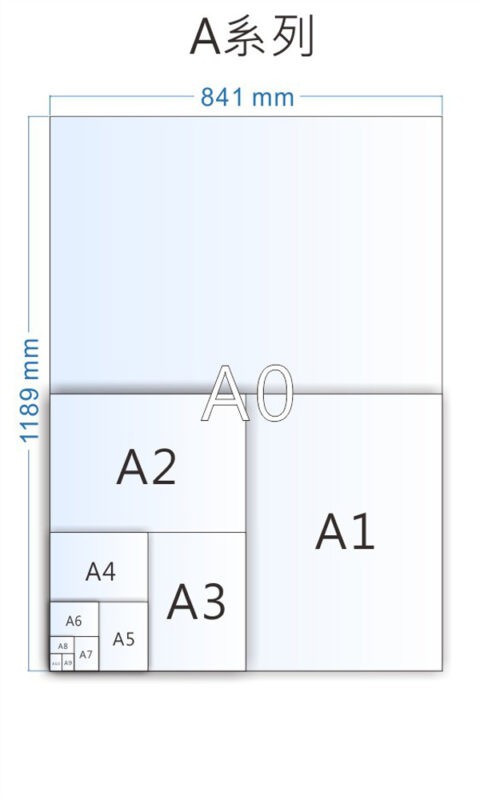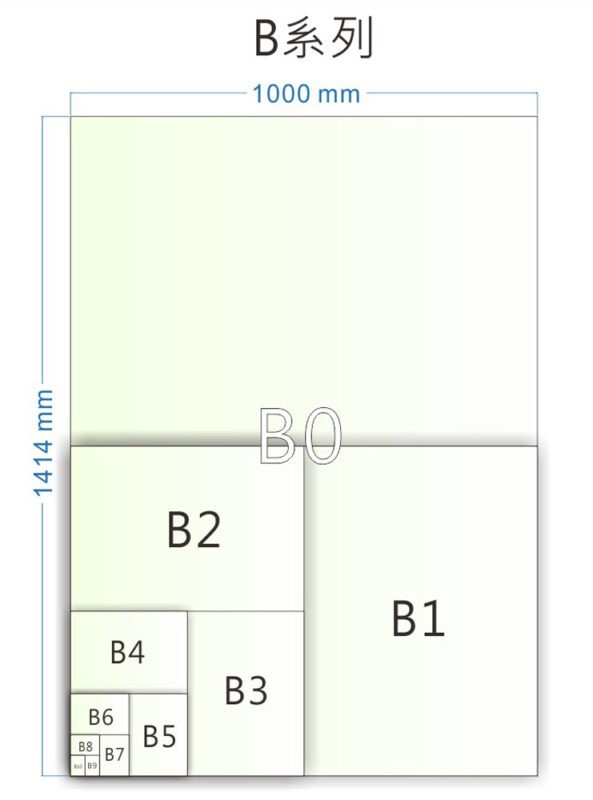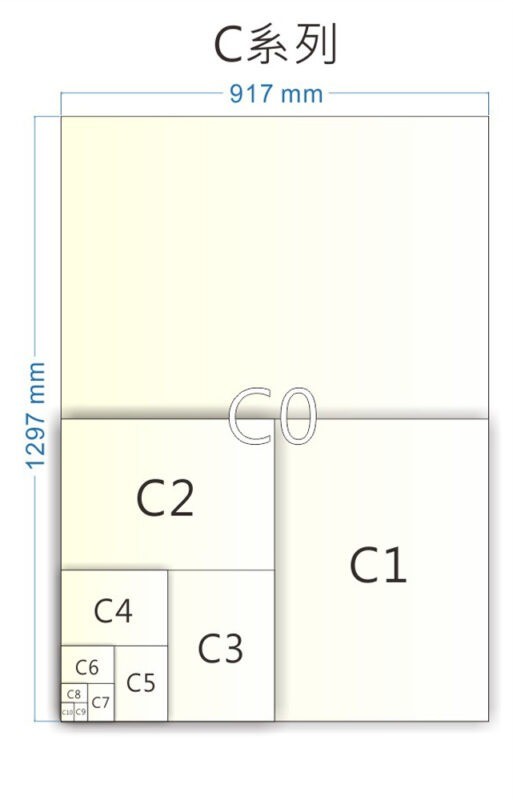How Big Is A1 Compared To A4? Understanding paper sizes can be confusing, but COMPARE.EDU.VN simplifies it all, comparing standard dimensions like A1 and A4. Discover their applications and make informed choices. Explore aspect ratio and sheet size for document, book, or poster creation.
1. Introduction to Paper Size Standards
Navigating the world of paper sizes requires familiarity with different standards. Generally, paper specifications are categorized into:
-
ISO International Standards: Defined by the International Organization for Standardization, including A series (A0, A1, A2, A3, etc.), B series (B0, B1, B2, B3, etc.), and C series (C0, C1, C2, C3, etc.). The sizing method is simple: each size is half the size of the preceding one. For example, A1 is half the size of A0, A2 is half of A1, and so on.
-
Common Specifications: These sizes are often seen in specific regions or industries. Examples include those based on traditional formats, which may vary slightly from ISO standards.
It’s essential to note that slight variations in size might exist between manufacturers, even within the same standard. Always double-check dimensions when precise measurements are critical.
2. Understanding ISO Paper Sizes: A Series
The ISO A series is a globally recognized standard for paper sizes, widely used for documents, stationery, and publications. Here’s a closer look at some key sizes:
2.1. A0 Size
A0 is the largest size in the A series, measuring 841 x 1189 mm (33.1 x 46.8 inches). It’s commonly used for:
- Posters: Large format posters for advertising and announcements.
- Technical Drawings: Detailed engineering and architectural plans.
- Display Graphics: Eye-catching visuals for exhibitions and presentations.
2.2. A1 Size
A1 measures 594 x 841 mm (23.4 x 33.1 inches), exactly half the size of A0. Its applications include:
- Posters: Smaller posters for indoor use.
- Flip Charts: Large pages for presentations and brainstorming.
- Architectural Drawings: Medium-sized plans and schematics.
- Art Prints: High-quality reproductions of artwork.
2.3. A2 Size
A2 paper measures 420 x 594 mm (16.5 x 23.4 inches), half the size of A1. It is suitable for:
- Posters: Small posters and promotional materials.
- Presentations: Visual aids and charts.
- Window Displays: Eye-catching graphics for retail.
- Art Prints: Reproductions of paintings and photographs.
2.4. A3 Size
A3 paper measures 297 x 420 mm (11.7 x 16.5 inches), half the size of A2. Common uses include:
- Presentations: Handouts and visual aids.
- Newsletters: Medium-sized publications.
- Posters: Small promotional posters.
- Tableau: Artistic or photographic display.
- Engineering Drawings: Detailed diagrams for small projects.
2.5. A4 Size
A4 is the most commonly used paper size worldwide, measuring 210 x 297 mm (8.3 x 11.7 inches). It is used for:
- Documents: Standard letters, reports, and essays.
- Magazines: Text and graphics.
- Brochures: Informative pamphlets.
- Invoices: Business transactions.
- Forms: Official documentation.
2.6. A5 Size
A5 paper measures 148 x 210 mm (5.8 x 8.3 inches), half the size of A4. It’s often used for:
- Notebooks: Compact books for writing and notes.
- Flyers: Small promotional leaflets.
- Booklets: Informative guides.
- Invitations: Personal greetings.
- Index Cards: Small reference cards.
Understanding the dimensions and uses of each size in the A series helps in selecting the correct paper for any project.
3. How Big Is A1 Compared to A4? A Detailed Comparison
The key difference between A1 and A4 paper lies in their dimensions. A1 measures 594 x 841 mm, while A4 measures 210 x 297 mm. To put it simply, A1 is four times the size of A3. A3 is twice the size of A4. A1 is significantly larger than A4.
3.1. Visualizing the Size Difference
Imagine placing A4 sheets on an A1 sheet. You would need eight A4 sheets to cover the area of a single A1 sheet. This visual comparison highlights the substantial difference in size between these two paper formats.
3.2. Applications Where Size Matters
The choice between A1 and A4 depends heavily on the application.
- A1 is ideal for posters, architectural drawings, and large-format presentations where visibility from a distance is crucial.
- A4 is more suitable for everyday documents, reports, and printed materials that need to be easily handled and stored.
3.3. Table: Comparing A1 and A4
| Feature | A1 Paper | A4 Paper |
|---|---|---|
| Dimensions | 594 x 841 mm (23.4 x 33.1 inches) | 210 x 297 mm (8.3 x 11.7 inches) |
| Common Uses | Posters, Architectural Drawings, Flip Charts | Documents, Letters, Reports, Magazines |
| Size Relative to A4 | Equivalent to 8 A4 sheets | Standard base size |
| Portability | Less portable | Highly portable |
| Cost | More expensive | Less expensive |



3.4. Practical Considerations
When deciding between A1 and A4, consider the following:
- Printing Costs: Printing on A1 paper is generally more expensive than A4 due to the larger size and specialized equipment required.
- Storage: A1 sheets require more storage space than A4 sheets.
- Viewing Distance: A1 is designed to be viewed from a distance, while A4 is intended for close reading.
By understanding these differences, you can make an informed decision about which paper size best suits your specific needs.
4. Exploring B Series Paper Sizes
The ISO B series offers a range of paper sizes that are slightly larger than their A series counterparts. B series paper is commonly used for posters, books, envelopes, and postcards. Here’s a brief look at some key sizes:
4.1. B0 Size
B0 measures 1000 x 1414 mm. This size is often used for large posters and display prints.
4.2. B1 Size
B1 measures 707 x 1000 mm. It’s suitable for medium-sized posters and charts.
4.3. B2 Size
B2 measures 500 x 707 mm. This size is frequently used for posters and artistic prints.
4.4. B3 Size
B3 measures 353 x 500 mm. It’s a popular choice for brochures and promotional materials.
4.5. B4 Size
B4 measures 250 x 353 mm. It’s often used for larger documents and small posters.
4.6. B5 Size
B5 measures 176 x 250 mm. This size is commonly used for books, notebooks, and magazines.
4.7. Applications of B Series
- Posters and Marketing Materials: B series sizes are great for creating eye-catching promotional materials.
- Books and Publications: B5 is a popular size for books, magazines, and notebooks.
- Envelopes: B series paper is also used for making envelopes to fit A series documents.
5. Understanding C Series Paper Sizes
The ISO C series is primarily used for envelopes designed to hold A series paper. The sizes are designed so that a C-size envelope will perfectly fit the corresponding A-size paper when folded.
5.1. C0 Size
C0 measures 917 x 1297 mm and is designed to hold an A0 sheet.
5.2. C1 Size
C1 measures 648 x 917 mm and holds an A1 sheet.
5.3. C2 Size
C2 measures 458 x 648 mm and fits an A2 sheet.
5.4. C3 Size
C3 measures 324 x 458 mm and is used for A3 sheets.
5.5. C4 Size
C4 measures 229 x 324 mm, perfect for holding A4 paper without folding.
5.6. C5 Size
C5 measures 162 x 229 mm and is designed to hold A5 paper or an A4 sheet folded in half.
5.7. C6 Size
C6 measures 114 x 162 mm, suitable for A6 paper or an A4 sheet folded into thirds.
5.8. How C Series Works with A Series
The C series is specifically designed to complement the A series. For example:
- An A4 sheet fits perfectly into a C4 envelope.
- An A5 sheet fits into a C5 envelope.
- An A6 sheet fits into a C6 envelope.
6. Taiwan’s Common Paper Sizes: Kikuban and Shirokuban
In Taiwan, two traditional paper size systems are still commonly used: Kikuban and Shirokuban. These systems have historical roots and are slightly different from the ISO standards.
6.1. Kikuban (GK)
Kikuban sizes are closer to the ISO A series. They are often used for printing books, magazines, and other publications.
| Kikuban Size | Centimeters |
|---|---|
| G1K | 63.5 x 88.9 |
| G2K | 44.45 x 63.5 |
| G4K | 31.75 x 44.45 |
| G8K | 22.23 x 31.75 |
| G16K | 15.88 x 22.23 |
| G32K | 11.18 x 15.88 |
| G64K | 7.95 x 11.18 |
| G128K | 5.59 x 7.95 |
6.2. Shirokuban
Shirokuban sizes are closer to the ISO B series. They are used for posters, packaging, and commercial printing.
| Shirokuban Size | Centimeters |
|---|---|
| 1K | 78.7 x 109.2 |
| 2K | 54.6 x 78.7 |
| 4K | 39.4 x 54.6 |
| 8K | 27.3 x 39.4 |
| 16K | 19.69 x 27.3 |
| 32K | 13.67 x 19.69 |
| 64K | 9.86 x 13.67 |
| 128K | 6.83 x 9.98 |
6.3. Converting Between Standards
Converting between these standards can be tricky due to the slight variations in size. Here’s a general guideline:
| Standard Size | Corresponds to Kikuban | Corresponds to Shirokuban |
|---|---|---|
| A4 | G8K | 10K |
| A5 | G16K | 25K |
| A6 | G36K | 49K |
| B4 | G4K | 8K |
| B5 | G8K | 16K |
| B6 | G25K | 36K |
6.4. Practical Tips for Using Taiwan’s Sizes
When working with Taiwanese printers or suppliers, it’s helpful to understand these traditional sizes. Always clarify the exact dimensions being used to avoid confusion.
7. Common Paper Size Applications
Different paper sizes are suited for different purposes. Here’s a guide to common applications:
7.1. A Series and Kikuban
- Documents and Reports: A4 is the standard for most office and academic documents.
- Books and Magazines: A4 and A5 are commonly used for book and magazine printing.
- Manuals and Guides: A5 is often used for creating handy manuals and guides.
7.2. B Series and Shirokuban
- Posters and Art Prints: B series sizes are great for creating eye-catching posters and art prints.
- Commercial Advertisements: B series paper is commonly used for advertising materials.
7.3. C Series
- Envelopes: C series sizes are specifically designed for making envelopes that fit A series paper.
7.4. Specific Examples
- A4 Size: Ideal for printing letters, reports, and documents.
- B5 Size: Great for printing books, notebooks, and magazines.
- A1 Size: Perfect for posters and large format presentations.
8. FAQs About Paper Sizes
Navigating the variety of paper sizes can be confusing. Here are some frequently asked questions to help clarify any doubts.
8.1. What Do “4K” and “8K” Mean?
In Taiwan, the term “K” refers to how many sheets can be cut from a full sheet of paper. For instance, an A5 size (25K) means 25 sheets can be cut from a full sheet measuring 31″ x 43″. If converted to Kikuban size, only 16 sheets can be made from a full sheet measuring 25″ x 35″; hence, it is called G16K.
8.2. Which Paper Size Should I Discuss with Manufacturers?
Due to the varying standards and different full sheet sizes, discussing paper sizes with manufacturers can be confusing. It is recommended to use centimeters or millimeters to specify the dimensions, avoiding any ambiguity.
8.3. What is the Size of a Full Sheet?
In Taiwan, a full sheet of Shiroku Ban paper is approximately 78.7 cm x 109.2 cm (31″ x 43″). A full sheet of Kikuban paper is approximately 63.5 cm x 88.9 cm (25″ x 35″).
8.4. What is GSM in Paper?
GSM stands for Grams per Square Meter. It measures the density of paper, indicating its thickness and quality. Higher GSM values mean thicker and more durable paper.
8.5. What is the Difference Between Bond Paper and Coated Paper?
Bond paper is uncoated and absorbent, ideal for writing and printing documents. Coated paper has a glossy or matte finish, enhancing image quality and making it suitable for photographs and marketing materials.
8.6. What is the Aspect Ratio of A Series Paper?
The aspect ratio of A series paper is 1:√2 (approximately 1:1.4142). This ratio ensures that when you cut a sheet in half, the resulting pieces maintain the same aspect ratio.
8.7. What is the Best Paper Size for a Poster?
A1 or A2 are commonly used for posters, depending on the desired size and viewing distance. A1 provides a larger canvas for impactful visuals, while A2 is suitable for smaller spaces.
8.8. What is the Standard Paper Size in the US?
In the United States, the standard paper size is Letter size, which measures 8.5 x 11 inches (215.9 x 279.4 mm).
8.9. How Do I Choose the Right Paper Weight?
Choose paper weight based on the intended use. Lighter paper (60-75 GSM) is suitable for everyday printing, while heavier paper (90-120 GSM) is better for documents and presentations. Cardstock (200+ GSM) is ideal for business cards and invitations.
8.10. Where Can I Find More Information on Paper Sizes?
For more detailed information, you can visit the International Organization for Standardization (ISO) website or refer to resources like the Leatai planner size guide.
9. Conclusion: Making Informed Choices
Understanding paper sizes, from the standard A series to Taiwan’s Kikuban and Shirokuban, empowers you to make informed decisions for various applications. Whether you’re printing documents, designing posters, or creating custom notebooks, knowing the dimensions and uses of each size will help you achieve the best results. Remember that resources like COMPARE.EDU.VN can provide detailed comparisons and insights to guide your choices.
Are you still struggling to compare different options objectively and comprehensively? Do you feel overwhelmed by the complexity of choices? COMPARE.EDU.VN is here to help. We provide detailed, objective comparisons across various products, services, and ideas. We clearly list the pros and cons of each option, compare features, specifications, prices, and provide user reviews. Visit COMPARE.EDU.VN now to make informed decisions with confidence.
Contact us for more information: Address: 333 Comparison Plaza, Choice City, CA 90210, United States. Whatsapp: +1 (626) 555-9090. Website: compare.edu.vn.
